Last time I wrote about Washington Square Park in Lower Manhattan, one of my favorite New York City parks and one with a checkered history, having started out as a gallows and potters’ field. Today I’m picking up that thread with the approach to the park, the Washington Square Arch, off Fifth Avenue.
In 1889, the city commissioned this eighty-six foot tall arch to commemorate the centennial of George Washington’s 1789 inauguration as our nation’s first president. The arch wasn’t dedicated until 1895; the figure of “Washington in War” by Hermon Atkins MacNeil on the east pedestal was added in 1916.1 2
The arch’s designer was the golden boy architect of the day, Stanford White (1853-1906). White favored the Beaux-Arts style, which drew on French neoclassicism and added Gothic and Renaissance features while incorporating modern materials such as iron and glass. He was a partner in McKim, Mead & White, the architectural firm that defined the aesthetic of Gilded Age America.3

In 1903, the talented triumvirate was invited to renovate the White House under Theodore Roosevelt.4 Between 1879 and 1915, they designed more than 900 mansions, notably the Madison Avenue mansion of J.P. Morgan (now the Morgan Library and Museum) and copious public buildings, including the first Madison Square Garden, razed in 1926 to make way for the New York Life Building, and New York’s original Penn Station demolished in 1963.5 6 7
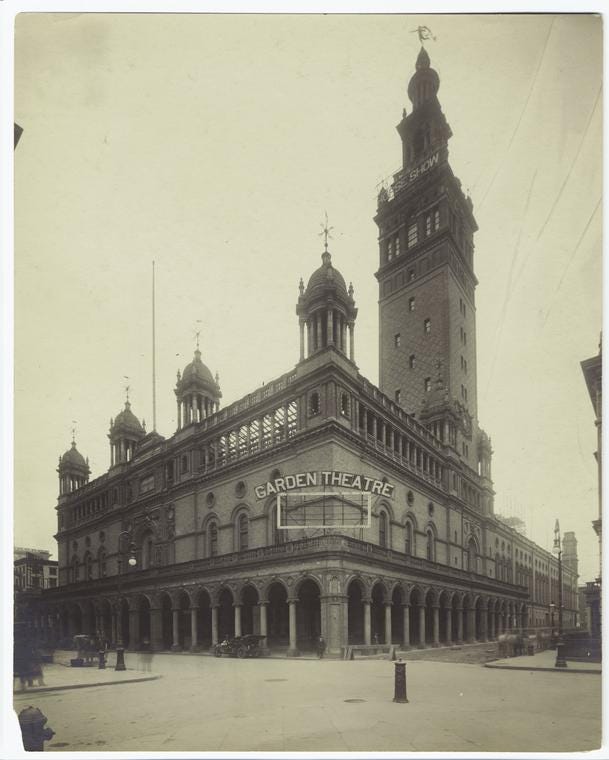
Gingerhaired and gregarious, nattily dressed and smooth-talking, White might be the third name on the firm’s letterhead, but he was the standout star of the trio, including outside of the office.
Though married,8 White was an unapologetic Lothario who kept a love nest at 22 West 24th Street, just off Madison Square Park on the cusp of what was then the seedy Tenderloin district.9 10 His preferred nocturnal companions were Broadway chorus girls, many of whom were underage, whom he invited over for champagne suppers. Think light on the food, heavy on the bubbles.11
At the top of this brownstone was White’s green-painted “playroom,” the central feature of which was a red velvet swing suspended from the ceiling by ivy entwined ropes. After supper, he would lead these presumably very tipsy girls upstairs and encourage them to shed their clothes (and inhibitions) and mount the swing while he took photos. Alas, White was no outlier. He was one of a wealthy group of rakes, all members of the Union Club,12 who organized secret orgies around the city. 13 So much for the Good Ole Days!
By far White’s most famous conquest was a young Broadway star, Evelyn Nesbit. Nesbit had started out as a chorus girl and quickly rose to become the darling of Broadway and the unequivocal It Girl of her era. Her winsome image graced calendars, powder tins, the covers of ladies’ magazines, you name it.14

Evelyn’s mother was the ultimate stage mother – think Mama Rose on steroids. She all but threw her sixteen-year-old daughter into the arms of the then forty-eight year-old Stanford White. In August 1901, after one of White’s champagne suppers a deux, Evelyn passed out. She later recalled waking up the next morning in White’s mirrored canopy bed naked beneath his satin sheets.15
Despite White’s having essentially drugged and date raped her,16 the two embarked on an affair, with White assuming the role of the generous “protector.” Over a torrid six months marked by almost daily rendezvous, he presented Nesbit with a pricey pearl necklace for her seventeenth birthday, three diamond rings, and a set of white fox furs. He also paid to have her discolored front tooth fixed because he found it off-putting and paid her mother’s rent. In return, Evelyn mounted White’s red-velvet swing on more than one occasion, almost always sans clothes.17
“(Stanford White was) eagerly and diligently and ravenously and remorselessly hunting young girls to their destruction…” — Mark Twain, friend of Stanford White.
But White was to have a competitor for Nesbit’s affections. In the summer of 1902, a twenty-one year old newspaper sketch artist, John Barrymore, met Nesbit at one of White’s soirees in his studio in the Tower at Madison Square. As Nesbit would later recall, Barrymore was so smitten with her that he offered marriage on the spot. (Barrymore would go on to become one of the greatest stage actors of his generation). When White decamped to Canada on a two-week fishing trip, Barrymore seized his opportunity and swooped in to woo Nesbit. The pair was seen perambulating in Central Park and other venues. Jealous, White intervened with Mama Nesbit, who already disapproved of Barrymore, and persuaded her to dipatch Evelyn to Mrs. De Mine’s private school in New Jersey. Though Nesbit returned to New York, and White, eventually their affair petered.18 19
Mother and daughter began casting their net for bigger fish. Before decamping to New Jersey, Evelyn had met another would-be suitor. Thirtysomething Harry Kendell Thaw was a Pittsburgh multi-millionaire with an overbearing mother, a taste for morphine, and a history of mental instability.20 In the era of Anthony Comstock’s New York Society for the Suppression of Vice, Thaw saw himself as another such crusader for morality. Even prior to learning the particulars of Evelyn’s treatment at the hands of White, the storied architect embodied everything Thaw loathed.21
In 1905, Evelyn left the stage to marry Thaw.22 By all accounts, including her own, she was miserable in the marriage, caught between her puritanical mother-in-law and violently jealous husband. Thaw’s jealousy centered on Stanford White, whom he blamed for defiling his wife.23
On the night of June 25, 1906, Stanford White and the Shaws attended the blacktie premiere of the musical, Mam'zelle Champagne, at the rooftop theater at Madison Square. Though the evening was saltry, Thaw wore a long, heavy greatcoat. During the grand finale, “I Could Love A Million Girls,” Thaw walked up to White’s table, took out a pistol from his coat and shot White three times including in the head. Other patrons, believing this to be a theatrical stunt, broke into appreciative applause.24
The subsequent murder trial was dubbed “The Trial of the Century,” the first time that moniker was used in the press.25 It was also the first trial in American history in which the jury had to be sequestered because of the press feeding frenzy. Six hundred potential jurors were interviewed and eventually winnowed to a chosen twelve.26
Covering the trial, Mark Twain, a former chum of White’s, wrote that New York society had long known White was “eagerly and diligently and ravenously and remorselessly hunting young girls to their destruction…”27
In reality, there were two trials, in 1906 and 1907. Ultimately Thaw pleaded insanity and was involuntarily committed to life in a mental hospital. He served seven years, then escaped and fled to Canada in 1913, was extradited to the U.S. in 1915 and hired a legal team to prove his sanity.28
Apart from the newspapers, there was one person to benefit from all the melodrama and misery. A brash young entrepreneur, inventor—and budding filmmaker: Thomas Edison. Just one week after the murder, Edison, keen to capitalize on the media sensationalism, released a movie entitled Rooftop Murder. It showed in the uber popular nickelodeon theaters, with many moviegoers seeing it multiple times.29
The Thaws finally divorced in 1916. In 1917, Harry severely whipped a nineteen-year-old boy, was arrested and returned to the insane asylum, where he stayed until 1924. He died in 1947.30
Nesbit lived a long and troubled life that included a short-lived second marriage to her dance partner, a brief burlesque career in the 1930s, a stint as a tearoom proprietress during Prohibition, several mediocre movie performances, and lastly as a sculptor. Her struggles with morphine and alcohol addiction were ongoing.31
“Stanny White was killed but my fate was worse. I lived.” — Evelyn Nesbit
In 1955, a visibly aged Nesbit went on the set of The Girl in the Red Velvet Swing, a movie based on her life to which she gave permission in return for payment. Originally Twentieth Century Fox tapped Marilyn Monroe for the lead but ended up going with Joan Collins (later, of Dynasty fame).
Nesbit died on January 17, 1967 of natural causes at age 82 in a California nursing home, her passing a minor entertainment news note in a world that had moved beyond her.32
You can view this Evelyn Nesbit tribute video on Youtube.
Share this free public post with other history lovers.
Not yet a subscriber to History With Hope? You can fix that here!
Folpe, Emily Kies. “History.” Washington Square Park Conservancy. https://washingtonsquareparkconservancy.org/history/
The design of the Washington Square Arch was inspired by the Arc de Triomphe in Paris (1836). July 14th, known as Bastille Day in the U.S., marks the storming of the notorious Bastille prison on July 14, 1789, a milestone moment in the French Revolution; in France, it’s simply Le Quatorze Juillet or La Fête Nationale. To any French friends reading this, belated bonne fête nationale!
https://www.npr.org/2011/01/01/132475837/these-architects-designed-a-nation
https://www.npr.org/2011/01/01/132475837/these-architects-designed-a-nation
https://avenuemagazine.com/stanford-white-murder-notorious-new-yorker/
https://www.exp1.com/blog/untold-nyc-history-madison-square-garden/
https://www.npr.org/2011/01/01/132475837/these-architects-designed-a-nation
In 1884 White had wed Elizabeth “Bessie” Springs Smith, a descendant of the founder of Smithtown on Long Island’s north shore. https://avenuemagazine.com/stanford-white-murder-notorious-new-yorker/
https://ephemeralnewyork.wordpress.com/2015/11/16/faded-outlines-of-an-infamous-flatiron-love-nest/
https://www.shsu.edu/his_rtc/2014_FALL/Murder_Stanford_White.pdf
Baatz, Simon, The Girl on the Velvet Swing: Sex, Murder, and Madness at the Dawn of the Twentieth Century. 2018.
The Union Club still exists. https://theunionclub.com/
Baatz, Simon, 2018.
Ibid.
https://www.famous-trials.com/thaw/405-home
In her trial testimony excerpted in The New York Times (and admittedly skewed to whip up sympathy for her murderous husband), Nesbit recalled drinking a single glass of champagne which tasted “funny,” after which “there was the sound of thumping in her head and the chintz bedroom began to whirl about.” Numerous reports including https://ephemeralnewyork.wordpress.com/2015/11/16/faded-outlines-of-an-infamous-flatiron-love-nest/.
https://www.famous-trials.com/thaw/405-home
https://www.historicalcrimedetective.com/page/17/
During this time away from New York City, Evelyn also had an appendectomy and nearly died. Some sources suggest the surgery may have been code for an abortion.
https://www.shsu.edu/his_rtc/2014_FALL/Murder_Stanford_White.pdf
Ibid.
Ibid.
Keppler, Nick. “Ten Facts About the Original ‘Trial of the Century.’” Mental Floss 25 June 2016. http://mentalfloss.com/article/81890/10-facts-about-original-trial-century
New-York Tribune, “An Hour in the Astor Library.” 24 March 1856, page 5.
https://avenuemagazine.com/stanford-white-murder-notorious-new-yorker/
https://www.shsu.edu/his_rtc/2014_FALL/Murder_Stanford_White.pdf
https://avenuemagazine.com/stanford-white-murder-notorious-new-yorker/
Keppler, N. 2016
https://www.mentalfloss.com/article/81890/10-facts-about-original-trial-century
https://www.famous-trials.com/thaw/405-home
Ibid.
The Record. “Evelyn Nesbit Thaw, at 81; Once Starred in Murder Case.” Jan. 19, 1967, page 44 via newspapers.com.
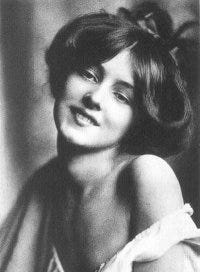



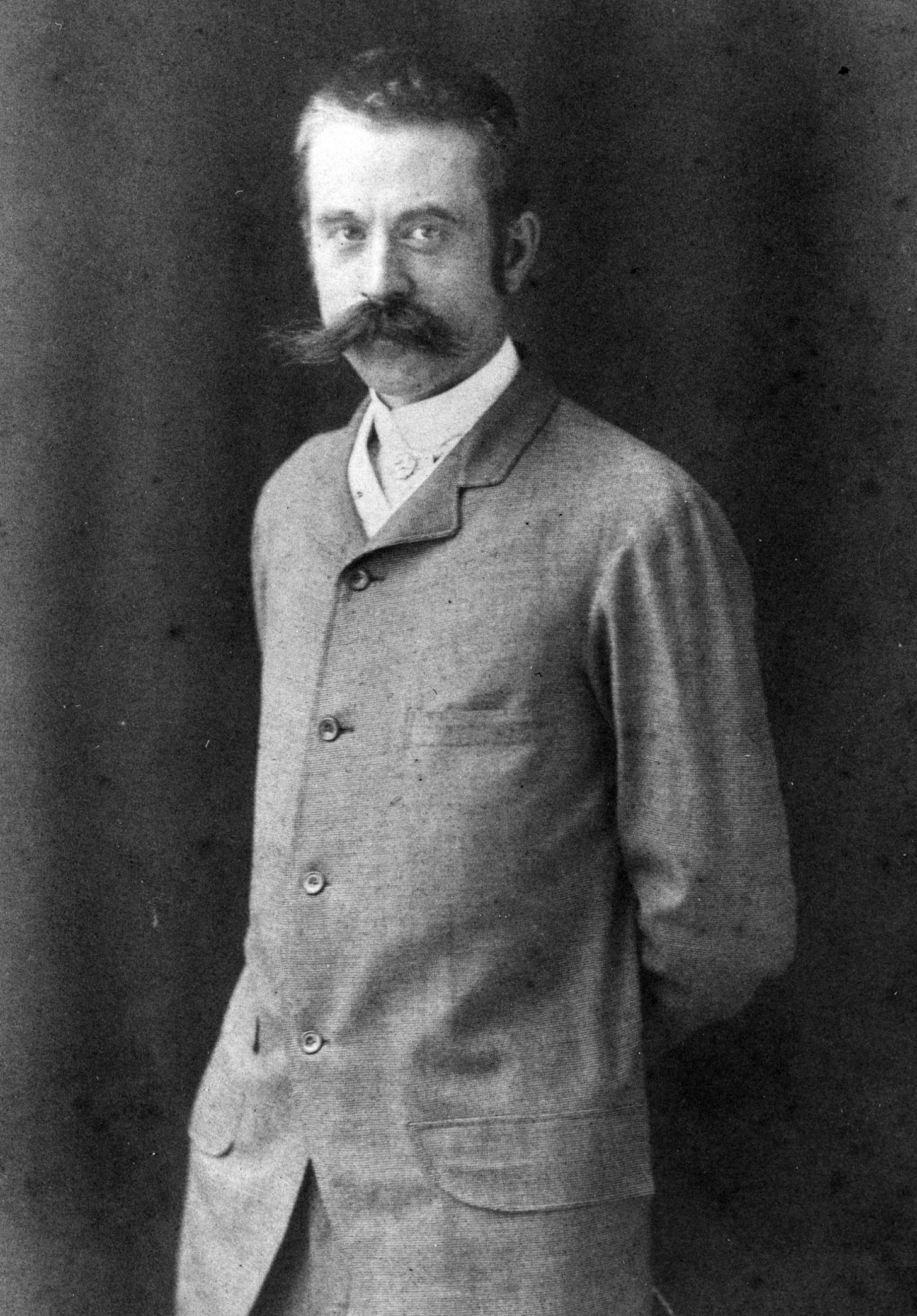
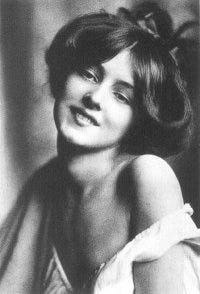


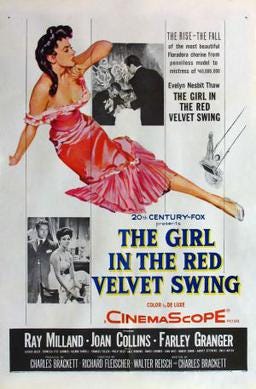
A great account of a wild story. The Edison twist is a harbinger of the burgeoning media and celebrity culture that would explode in the 20th century.
What an interesting story.